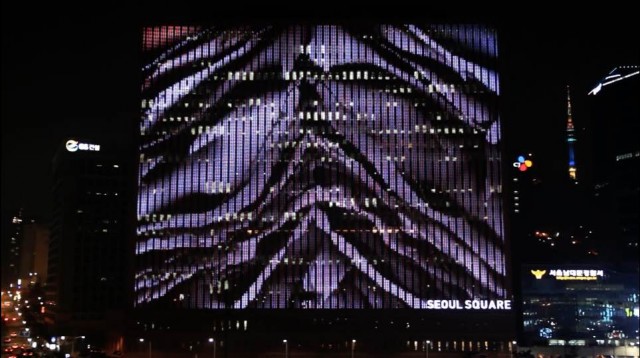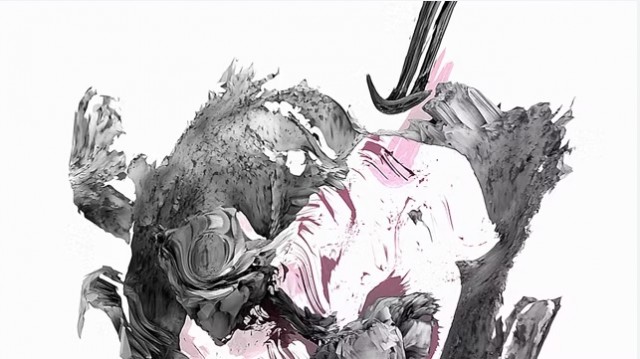Much of the backlash towards artificial intelligence in the arts is the conception that it suborns the artist to the role of a mere technician on the way to making them irrelevant and replaceable. This idea, to me, hinges on a misapprehension that the generation of images or words is the primary component of art and that the technical skill necessary for this generation is the artist’s major contribution. And while I don’t want to pull apart and analyze that statement too much at the moment, today’s piece is a useful counterpoint.
Hysteresis is an artwork from 2021 and so could not have predicted the AI discourse of 2023. However, its artist, Robert Seidel, has inadvertently produced a work that I believe fulfills an important role in said discourse, pointing the path towards a fruitful, interesting collaboration with the technology—making art that is in conversation with, but not subsumed by the tech.
It is, indeed, a mistake to over-index the machine-learning aspects of the piece, as it is one component of the process. From the official description:
To ascribe AI authorship over this work would unfairly diminish the sketches that serve as the aesthetic basis of the piece, or downplay Tsuki’s choreography and performance. It ignores the crucial role of Oval (Markus Popp) who provides a score that “incessantly corrodes this dense web of associations”. Furthermore, it undermines the way the work is recognizably linked intellectually, stylistically, and aesthetically to Seidel’s over 20-year career of art-making.
***
To try and explain, or even properly contextualize artist Robert Seidel’s unique and influential career is beyond the purview of this simple review. Even if it was not, I’m likely inadequate for the task. Asked to describe his art himself, Seidel utilizes the overwrought descriptors that typify modern art, describing that through “…the organic interplay of various structural, spatial and temporal concepts, he (Seidel) creates a continuously evolving complexity. Out of this multifaceted perspective emerges a narrative skeleton, through which viewers connect to the artwork on an evolutionary-derived and phylogenetic-fixated symbolic level.” Reader, I’m not capable of analyzing the work on this sort of specialist level.
However, as that last line implies, Seidel’s art does not require full intellectual understanding to be appreciated—it works quite well as a visceral experience. On a simplistic level, the appeal of his work is that he helped define a particular vision of motion design as art in the early 2000s, charting a path away from the influence of the analog pioneers of experimental film and the functional worlds of digital film and advertising. He did this, in pieces like 2004’s seminal work, _grau, by leaning into the essential digital nature of his tools, but also through a fascination with and incorporation of the hard sciences. Seidel pursued biology as a discipline before going to school for media, and this blending of the digital with the natural was and continues to be, quite influential.
It is also quite beautiful, full of surprising shapes and emergent processes that continue on or die off with an abstract, yet decipherable logic. And, by being digital, the works are free from the canvas of their creation and kept getting bigger…

From the documentation video for “scrape” an LED facade on the side of a building in Seoul.
Screens increasingly turned to projections, as Seidel seemingly wished to escape the tyranny of 2D, sometimes in interesting and exotic ways. And so it is funny to me that, with Hysteresis, Seidel’s organic impulse finds a real-life human to collaborate with, and rather than utilizing Tsuki’s performance to escape the screen, he sucks her into it instead.
***
Seidel’s art, projected onto Tsuki, creates an unusual pas de deux. His sketches, processed through custom-coded software he has spent a career designing, have the effect of manipulating the subject. If Tsuki’s fusionist choreography is already suffused with a sensation of “becoming” then Seidel’s art added to that has a cyborgian association—a fitting result given Seidel’s career preoccupations. But, if Tsuki is an organic subject in which to project Seidel’s art, escaping its digital boundary, the AI pass is a complication. Yes, it continues the process of transformation, but she is brought back into the screen and the extent of her transformation is overwhelming. It is more like she is a vector by which the human is introduced to the machine. AI is not transforming her so much as she is transforming it. As Seidel describes,
Seidel, through multi-disciplinary artistic collaboration, has managed to derail the AI generative process to induce it to create images that are unique, abstract, and beautiful, and showing that it is not a replacement for the artist, but a tool, bending it away from its own aesthetics and towards his.

 Jason Sondhi
Jason Sondhi
